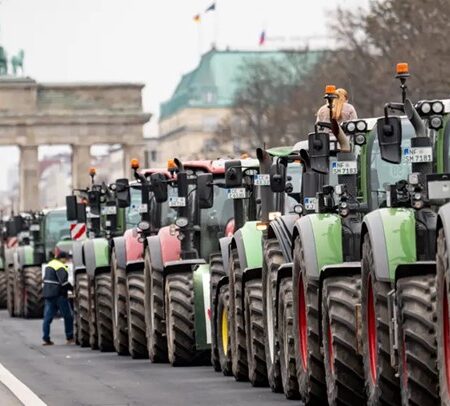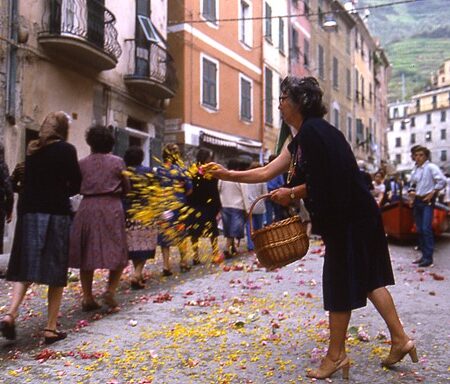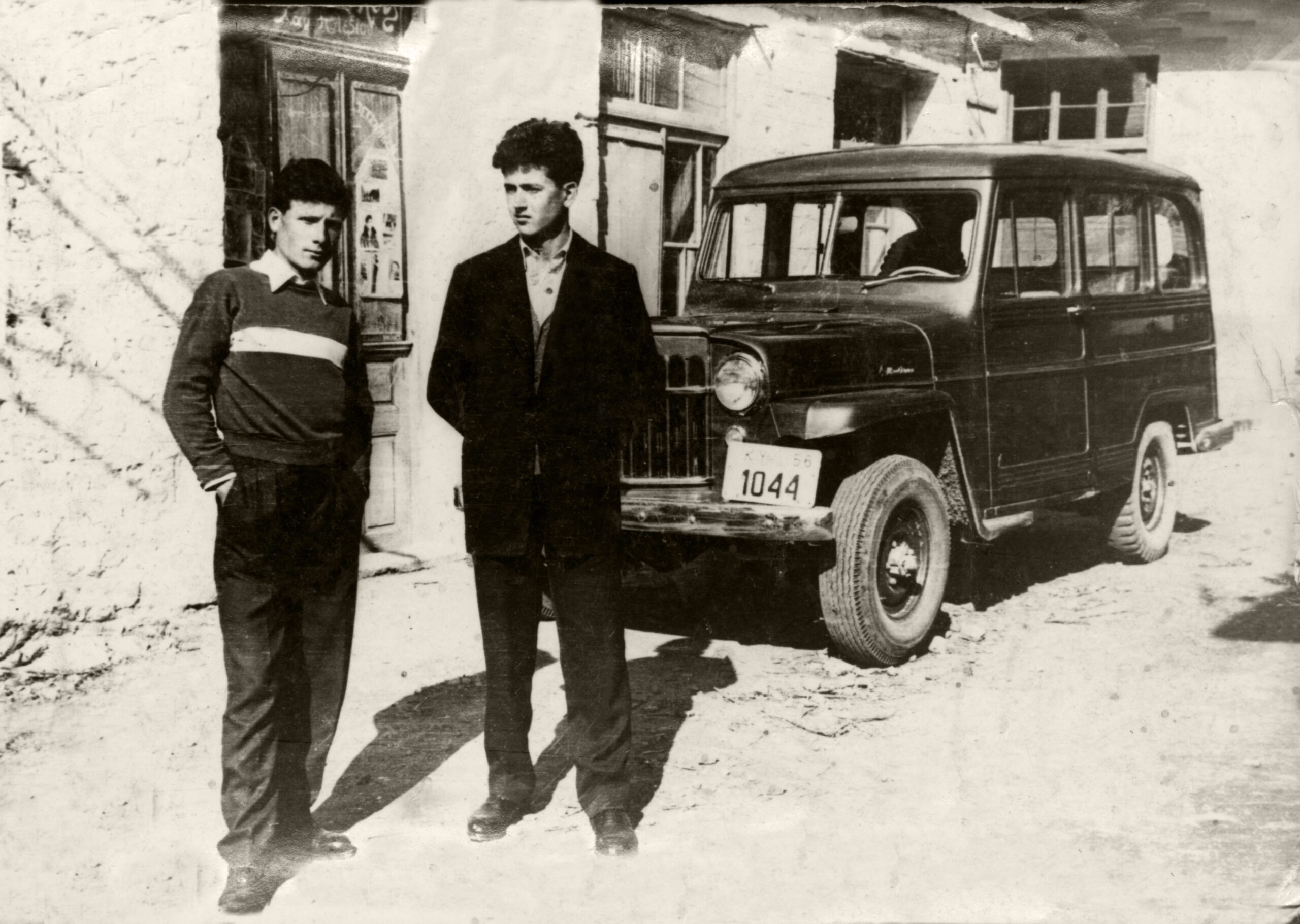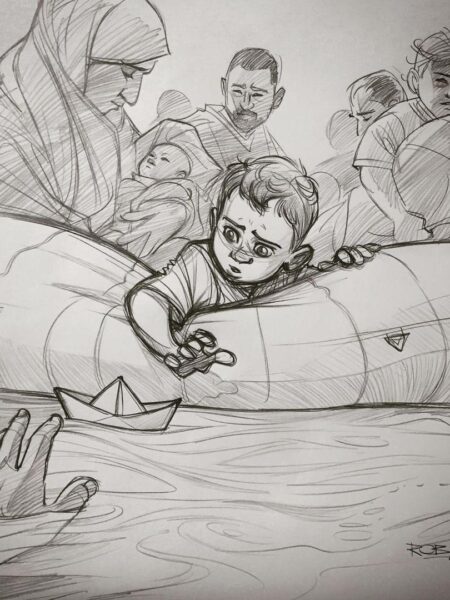Introduction
The Mezzogiorno is famously known for its faulty development compared to the rest of the Italian Peninsula; its economy is based on seasonal and agricultural work, and the results of these productions come from medium and small businesses, which see various people employed. 1 Now, another famous trait of the territory is the exploitation of the employed braccianti, which, to clarify, is not limited to the southern regions as we have many cases all over the national territory; however, when we are talking about the Mezzogiorno, its essential to consider the historical developments that allowed the facilitation of the creation of these dynamics. 2 The conditions in which individuals working the lands of Rural Puglia find themselves are often unsustainable, as they are required to perform a minimum of ten hours a day, without a break, while undergoing physical and psychological abuse, all for insufficient wages. 3 This reality is not exclusive to locals and involves immigrants in even more entangled circumstances.
The purpose of the paper is to explore the historical context that first allowed the formation of such environments in Southern Italy and analyze resolutions put into action regarding immigration and its impact on the agricultural sector. The interventions from two workers of the same micro-reality in the South of Puglia will contribute to narrating such a flawed situation. They will be fundamental to fully understanding the problems embedded in the Italian economy and labour system.
1.“Are we a Country of Immigration?” : Political and Legislative Response
In the second half of the 20th century, Spain and Italy became the primary receivers of immigration fluxes during the 90s. 4 At the beginning of this new phenomenon, countries started to apply regulations, hoping they would revert the trend; Italy tried to do the same without success. The primary failure has been not perceiving immigration as an opportunity for the Country and the people arriving but instead as a problem to solve, something to stop. Throughout the decades, the usual narratives about invasions, stolen jobs, and the perception of “the other” have become more and more insidious, becoming part of our social fabric, bleeding onto the workforce and creating a sort of hierarchy as one of our narrators tells us concerning having worked with immigrants’ braccianti:“[…] So, there was a difference in the treatment of workers by the employer; which surprised me, because the way I see it, when you do a job together you have to create harmony and collaboration, instead, — speaking of worker with worker — there was this propensity on the part of the local workers to give orders to workers who were not local. Clearly, it didn’t happen to me, even though I wasn’t local, but it happened regularly, even in uncomfortable and annoying tones, which bothered me for the others.“
Ironically enough, even in moments — such as the one we are living in right now — where there is a necessity for foreign labour in many of the Italian economic sectors, especially agriculture, there is a refusal to facilitate the access and subsequent integration of those who arrive on National soil. The situation becomes even more absurd when we realize that immigration reception in Italy has always had its roots planted in this economic need. A bad seed was planted in 2002 with Law n°189, commonly known as Bossi-Fini, which linked the residence permit to a job contract; this law enables Italian entrepreneurs to ask the ministry for the authorization of entry of migrants to employment by providing a list of names and therefore oiling the system of human trafficking that recruits people to work in Italy, who will then carry debts from the journey that will weight them down for years. Also, many are left without a contract after their arrival or decide to stay without a contract after the period of employment, ending up in precautious situations. Many more people will fall into this system, as it is no secret that Italian agricultural production is supported by immigrant labour. 5 The Coldiretti stresses the need for specialized figures and harvesters; in 2022, it relates a statement expressing the need for 100 thousand people to guarantee the summer harvest, urging the release of permits to immigrant labourers. 6
Being a regular immigrant is the prerequisite to entering the fabric of society; in 2020, Law n.34/2020 was approved to regularize immigrant labourers, and after three years, less than 40 percent of the 200.000 practices had been approved; furthermore, the number of requests have been meagre due to the many payments required to proceed with the practices and complicated bureaucracy; those who did comply with the request are probably still waiting for it to be approved. 7
The problem expands beyond the physical border of Italy as the government continues to make agreements with countries such as Libya and Tunisia; President Kais Saied started a violent campaign against people from South Saharan Africa, who find themselves detained in what has been defined by Italian politicians as a “safe haven”, are regularly deported and left to fend for themselves in the desert area. 8 Italy’s focus has been on trying to limit immigrants’ presence, and in trying to do so, it only succeeded in creating higher numbers of non-registered people on Italian soil and higher numbers of victims of the sea and overseas detainment camps.
2. Labour Exploitation in Agriculture
As a result, we can gather that legislative roots have played a role in the formation of harsh working conditions in the agricultural sector in Southern Italy, leaving many unprotected to those ready to exploit a person in need. “We don’t have the possibility to hire people” or “There is work, but if you want it, we do it this way [“out of the books”] ”; these are some of the many things that a young person trying to find a job under the pressures of their newly found independence, in a stranger region, had to hear and had to accept to be able to live and sustain themselves.
In Puglia, employment methods reflected the absence of economic security in certain micro-realities. A narrator has shared that not long before they entered the agricultural sector themself (the early 2000s), people used to be employed “for the day”, and they’d be chosen by gathering in the early hours of the day in a public square, where the so-called “padroni”, the masters, would decide who to hire for the day. These methods were the norm, and a different situation would have been abnormal; nowadays, we can still perceive an underlying pattern derived from those roots, with few exceptions. Amadou is a Senegalese immigrant who settled in Salento years ago, where he felt welcomed. He talks warmly about the village where he has now built a family. He has worked in agriculture for about five years: “It was hard in the beginning, […]. Physically, you can feel the hardship, but with time, you learn the mechanisms, and it becomes easier.” When asked about his relationship with co-workers and employers, he smiles and says he gets along with them, as they are young and super friendly. Thanks to our short conversation, I had a glimpse inside the communities within these environments, which allowed me to perceive a change happening even in the smallest and most remote areas. This change is linked not to systemic changes but to people.
The most common narrative is very different from the testimony above, as we have stories of modern slavery and unsustainable working conditions, which have, over the years, brought too many deaths. In 2019, the British Medical Journal denounced the deaths of 1500 workers in just six years, as they talk about the conditions in which they live and the measly pay that awaits them. Law n° 199/2016, the aim is that of combating non-declared labour, adding legal persecution for both the Caporale and entrepreneur through the redefinition of the crime of caporalato, now “illegal intermediation and exploitation of labour”, seems to have had limited impact, as in 2021 the number of irregular workers in agriculture was of 230 thousand, a quarter of the entire workforce employed in the sector.9 This employment model has become the norm, widely spread and well rooted, doing everything they can for a better profit, even walking on people’s dignity while forgetting their own.
3. Historical Background: Left Behind
These circumstances did not happen spontaneously but resulted from a long historical precedent. Before the Unification in 1861, Italy found Itself in quite a balanced situation, as the Country was in a condition of equally spread misery and quite behind, economically and industrially, compared to neighbouring countries. Now, social indicators, such as birth-to-date mortality rate, starvation, malnutrition, and child mortality, can tell us a lot about a historical period; when analyzing data of the singular Italian regions in the 19th century, we can see that they present similarities, with only slight differences and a major one regarding illiteracy being primarily a problem in the Islands and South. Generally, prominent gaps can be observed between regions of the same area, more than between the two areas. 10 Having said that, the people inhabiting the Country could not have been more different, or better yet, they could not have had worse prejudices against each other. Since the beginning, a sentiment of hatred and a recognition of the other was present; problems after the Unification of the peninsula saw the intensification of stereotypes; now, the people of the Meridione resulted dangerous almost, to cite Lady Mary Holland: “ All of the cities of Naples and Sicily are in a state of indecency, almost inferior to those of the ancient tribes of Africa.” 11
Additionally, the South felt betrayed by the promises of Agrarian Reforms in exchange for their support in the March towards Unification, which then turned out to be void. The malcontent that followed, mixed with the nostalgia of the Bourbon Kingdom, saw the rise of violent organized groups. 12 Armed forces started to move south to tame the agitation, and in this climate, bodies began to pile up. It was in this initial clash between two realities that the perception of “different”, based on negative prejudices against Southerners, became a recognized fact.
Following the Unification, we see the beginning of new investments and reforms to bring the Country to the next level, trying to reach the rest of the European Community. Southern Regions were subject to few and ineffective policies to push their development, and in the process, they encountered direct disinvestments; many industries were closed or transferred in the process of investments North, one example being the Royal Ironworks and Workshop of Mangiana, which had been in Calabria ever since the 18th century, was closed in 1876 and transferred to Terni, a city in the central region of Umbria; this, and many other cases, is proof of the absence of aiming towards equal growth of all of the Italian territory, as the north was probably considered a safer bet due to its geographical proximity to already established economies. 13 The contemporary backwardness of the Mezzogiorno was not predestined but an actual consequence of the actions that followed the Unification of the Boot and its Islands and the policies and the attention — or lack of — that have been directed towards it since the very beginning.
After the first half of the 20th century, and therefore, after the two world wars, we started to see a more patriotic Italy, as in many cases, being on the same front against a common enemy creates a sense of unity. In this new climate, we also see the beginning of reforms in the South, such as the Agrarian Reform of 1950, which aimed to distribute arable land to smaller farmers and interrupt the dynamic of clientelism in agricultural-oriented regions. The Cassa per il Mezzogiorno followed soon after and was directed towards infrastructures. In this period, we see an intensification of the migration flows directed north, towards the Industrial Triangle within the national territory, and Central European Countries, such as Switzerland and Germany, all needed man labour after the war. People migrating had to face discriminatory attitudes in the day-to-day, which were reflected in academic studies: in 1951, Sociologist Friedrisch Vochting associated the economic inferiority of the South to the genetics of its inhabitants, and he wasn’t the first nor the last, as just in 2010, Richard Lynn, blamed the impossibility of closure of the economic Gap to the Arab genetics. So, in many instances, it has been the people blamed for the “Questione Meridionale”; indeed, from a more logical and less xenophobic point of view, it would be the people in power, but it’s all a matter of perspective. 14
The citizens of the Mezzogiorno lost trust in the State as they have, for years, been left behind; as a consequence, we have higher numbers of submerged work habits and environments favourable to the formation of exploitation and corruption.
Conclusions
Historically, many State Interventions landed negatively on Southern regions, which with time cultivated mistrust and illegality; in this insecure economic area, the perfect environment for the exploitation of vulnerable people was created, as well as flows of emigration in search for better opportunities, which seem impossible to have in the land on which no one ever dared to bet. Emigration eventually became accompanied by immigration and talk of “emergencies”. It is here, in how the people are first presented, that one of the problems lies, as it created the illusion of an invasion, of something we should fear when, in reality, the only thing to fear is the policies put into act in the last decades, of which purpose was always that to limit and not to integrate.
Bibliography
A. Granata. “Mezzogiorno/Mezzogiorni. Il Sud d’italia Dall’Unificazione ai Patti Territoriali”. http://www.dsps.unict.it/sites/default/files/files/DISPENSA PROF_ GRANATA – MEZZOGIORNO-MEZZOGIORNI.pdf.
Camera dei Deputati. “La Disciplina Dell’immigrazione.” La disciplina dell’immigrazione. https://temi.camera.it/leg19DIL/post/19_pl18_le_principali_misure_della_xvii_legislatura.html.
Caprioglio, C., Rigo, E. Diritto, Immigrazione e Cittadinanza fascicolo n. 3/2020. “Lavoro, Politiche Migratorie e Sfruttamente: la Condizione dei Braccianti Migranti in Agricoltura”.
https://www.dirittoimmigrazionecittadinanza.it/archivio-saggi-commenti/saggi/fascicolo-n-3-2020-1/650-lavoro-politiche-migratorie-e-sfruttamento-la-condizione-dei-braccianti-migranti-in-agricoltura/file.
Caporalato – Legislazione. https://integrazionemigranti.gov.it/it-it/Altre-info/e/2/o/18///id/30/Caporalato-legislazione.
Corrado, A., F. Caruso, M. Lo Cascio, M. Nori, L. Palumbo, and A. Triandafyllidou. “IS ITALIAN AGRICULTURE A ‘PULL FACTOR’ FOR IRREGULAR MIGRATION – AND, IF SO, WHY?” Open Society Foundations, 2018. http://www.jstor.org/stable/resrep43032.
Daniele, Vittorio, and Paolo Malanima . “(PDF) Alle Origini Del Divario.” Research gate. https://www.researchgate.net/publication/265186892_Alle_origini_del_divario.
Felice, Emanuela. “Lo Sviluppo Economico Delle Regioni: Dalle Tre Italie Alle Due Italie – Enciclopedia.” Treccani. https://www.treccani.it/enciclopedia/lo-sviluppo-economico-delle-regioni-dalle-tre-italie-alle-due-italie_(L’Italia-e-le-sue-Regioni)/.
Fumia, Alessandro. “Mongiana Una Parte Di Storia Sconosciuta.” Alta Terra di Lavoro. https://www.altaterradilavoro.com/mongiana-una-parte-di-storia-sconosciuta/.
Gaita, Luisiana. “Caporalato E Sfruttamento, British Medical Journal: ‘In Sei Anni Morti 1500 Braccianti. 100mila Persone Nelle Tendopoli.’” Il Fatto Quotidiano, March 28, 2019. https://www.ilfattoquotidiano.it/2019/03/28/caporalato-e-sfruttamento-british-medical-journal-in-sei-anni-morti-1500-braccianti-100mila-persone-nelle-tendopoli/5068778/.
Giovanna Dimitolo(foto), Avv. Gennaro Santoro (Roma), Avv. Arturo Raffaele Covella, and Riccardo Bottazzo. “Regolarizzazione 2020: Pratiche Ancora in Stallo e Uffici Sotto Organico.” Progetto Melting Pot Europa. https://www.meltingpot.org/2023/05/regolarizzazione-2020-pratiche-ancora-in-stallo-e-uffici-sotto-organico/.
Guerra, Alice. “Al Sud Il Problema è La Poca Fiducia Nello Stato: A. Guerra.” Lavoce.info, March 8, 2022. https://lavoce.info/archives/93623/al-sud-il-problema-e-la-poca-fiducia-nello-stato/.
“Il Contrasto al Caporalato Nella Legge n. 199 Del 2016.” Vai ai temi della legislatura corrente. https://temi.camera.it/leg17/post/OCD25-272.html?tema=temi%2Fnuovi_reati_d.
Lo Sfruttamento Lavorativo in Agricoltura – Caritas Inmigration. https://inmigration.caritas.it/sites/default/files/documenti/2021-05/10 dicembre 2015 – Lo sfruttamento lavorativo in agricoltura.pdf.
“Migranti: In Puglia Il 10% Lavoratori Agricoli Extracomunitari Su Tot Nazionale; 1/3 Dei Raccolti Da Mani Straniere.” Puglia Coldiretti, October 26, 2023. https://lecce.coldiretti.it/news/migranti-in-puglia-il-10-lavoratori-agricoli-extracomunitari-su-tot-nazionale-1-3-dei-raccolti-da-mani-straniere/.
Mira, Antonio M. “Il Rapporto. Caporalato: Salite a 230mila Le Vittime Dello Sfruttamento.” Avvenire, November 29, 2022. https://www.avvenire.it/attualita/pagine/rapporto-caporalato-2022#:~:text=Nel 2021 sono stati circa,intera forza lavoro in agricoltura.
Moe , Nelson. «altro che italia!». Il Sud dei Piemontesi (1860-61). http://www.rivistameridiana.it/files/Moe,–Altro-che-Italia–.pdf.
Strangio, Donatella. Asia, Latin America and Africa in global economic history. Roma: Edizioni Nuova cultura, 2022.
“Tunisia: Aumenta La Repressione Di Organizzazioni Della Società Civile E Migranti.” Amnesty International Italia, May 17, 2024. https://www.amnesty.it/tunisia-aumenta-la-repressione-di-organizzazioni-della-societa-civile-e-migranti/.
- Southern Italy, also known as Meridione or Mezzogiorno, consists of eight regions: Abruzzo, Puglia, Basilicata, Calabria, Campania, Molise, Sicily, and Sardinia. ↩
- Agricultural Laborer employed for seasonal Jobs. ↩
- Alessandra CORRADO et al., “Is Italian Agriculture a ‘pull Factor’ for Irregular Migration – and, If so, Why?,” Introduction, pp 2-3; http://www.jstor.org/stable/resrep43032. ↩
- Donatella Strangio, Asia, Latin America and Africa in Global Economic History (Roma: Edizioni Nuova cultura, 2022); Chapter 15, pp. 139-147. ↩
- “Migranti: In Puglia Il 10% Lavoratori Agricoli Extracomunitari su Tot Nazioanle; 1/3 Dei Raccolti Da Mani Straniere.” Puglia Coldiretti. https://lecce.coldiretti.it/news/migranti-in-puglia-il-10-lavoratori-agricoli-extracomunitari-su-tot-nazionale-1-3-dei-raccolti-da-mani-straniere/ ↩
- Coldiretti Puglia is representative of more than 50 thousand Regional Agricultural Industries. ↩
- “Regolarizzazione 2020: Pratiche Ancora in Stallo e Uffici Sotto Organico,” Progetto Melting Pot Europa, https://www.meltingpot.org/2023/05/regolarizzazione-2020-pratiche-ancora-in-stallo-e-uffici-sotto-organico/. ↩
- “Tunisia: Aumenta La Repressione Di Organizzazioni Della Società Civile E Migranti,” Amnesty International Italia, https://www.amnesty.it/tunisia-aumenta-la-repressione-di-organizzazioni-della-societa-civile-e-migranti/. ↩
- Luisiana Gaita, “Caporalato E Sfruttamento, British Medical Journal: ‘In Sei Anni Morti 1500 Braccianti. 100mila Persone Nelle Tendopoli,’” Il Fatto Quotidiano, https://www.ilfattoquotidiano.it/2019/03/28/caporalato-e-sfruttamento-british-medical-journal-in-sei-anni-morti-1500-braccianti-100mila-persone-nelle-tendopoli/5068778/;
Camera dei deputati, “Il Contrasto al Caporalato Nella Legge n. 199 Del 2016,” https://temi.camera.it/leg17/post/OCD25-272.html?tema=temi%2Fnuovi_reati_d ;
Antonio M. Mira, “Il Rapporto. Caporalato: Salite a 230mila Le Vittime Dello Sfruttamento,” Avvenire, November 29, 2022, https://www.avvenire.it/attualita/pagine/rapporto-caporalato-2022#:~:text=Nel 2021 sono stati circa,intera forza lavoro in agricoltura. ↩
- Daniele, Vittorio, and Paolo Malanima . “(PDF) Alle Origini Del Divario.”, pp. 93-104; Research gate. https://www.researchgate.net/publication/265186892_Alle_origini_del_divario. pp. 93-104 ↩
- Nelson Moe , «altro che italia!». Il Sud dei Piemontesi (1860-61), Chapter 3, pp. 64-71; http://www.rivistameridiana.it/files/Moe,–Altro-che-Italia–.pdf. ↩
- The Bourbon Royal House reigned over the two Kingdom of Naples and Sicily from 1734 to 1816, then it ruled over the two Unified Kingdoms, the “Two Sicilies” until 1860. ↩
- Alessandro Fumia, “Mongiana Una Parte Di Storia Sconosciuta,” Alta Terra di Lavoro, https://www.altaterradilavoro.com/mongiana-una-parte-di-storia-sconosciuta/. ↩
- Questione Meridonale: Expression utilized to describe the problems of the Southern Regions of Italy, mainly in regard to economic development. ↩
















